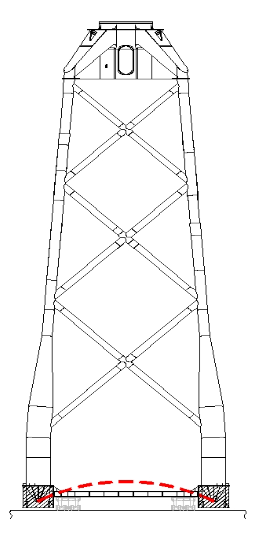Hi there.
I hope someone will help me finish my model.
I am analyzing a beam that will move the entire wind tunnel support jacket. See first picture.
This beam is placed on top of the SPMT truck. See second picture.
My question is:
A. How to I model the contact between the top of the long beam and bottom of the bracket (second picture denoted as A). I am getting an error 'Undefined SET SSID on CONTACT 1' but I already defined it. I don't know what am I missing.
B. The boundary condition will be placed at the wood locations. This will be in compression only condition. How do I model that?
I am attaching my model (only half have been modeled yet).

<?xml version="1.0" encoding="UTF-8"?>
Unable to find an attachment - read this blog